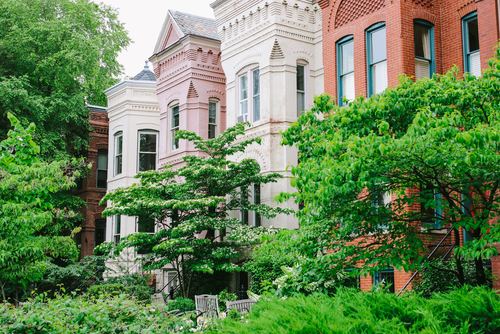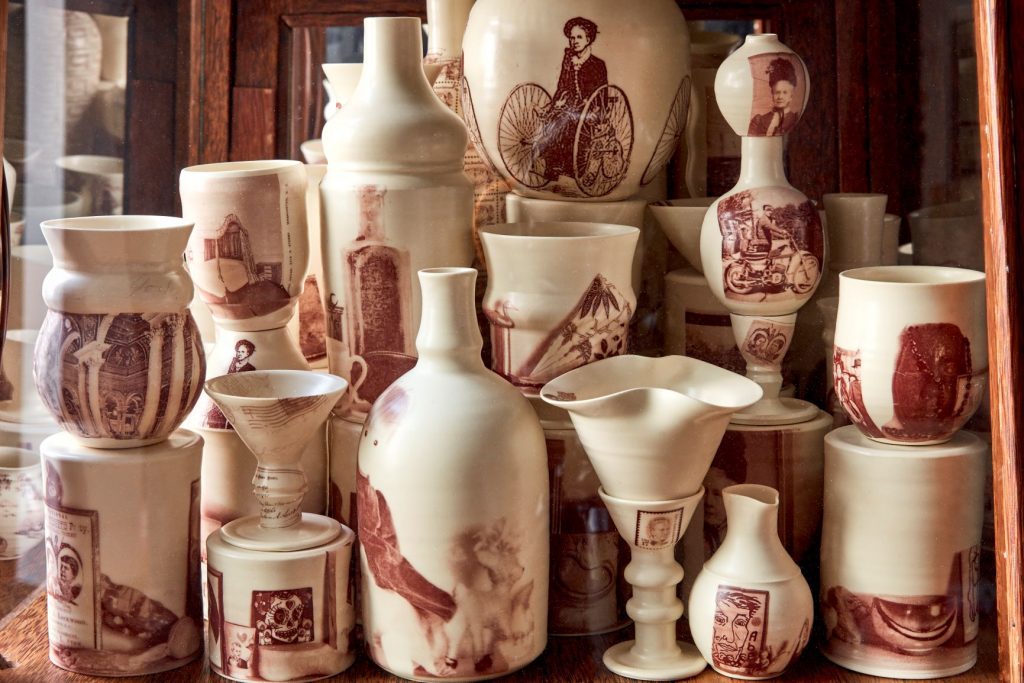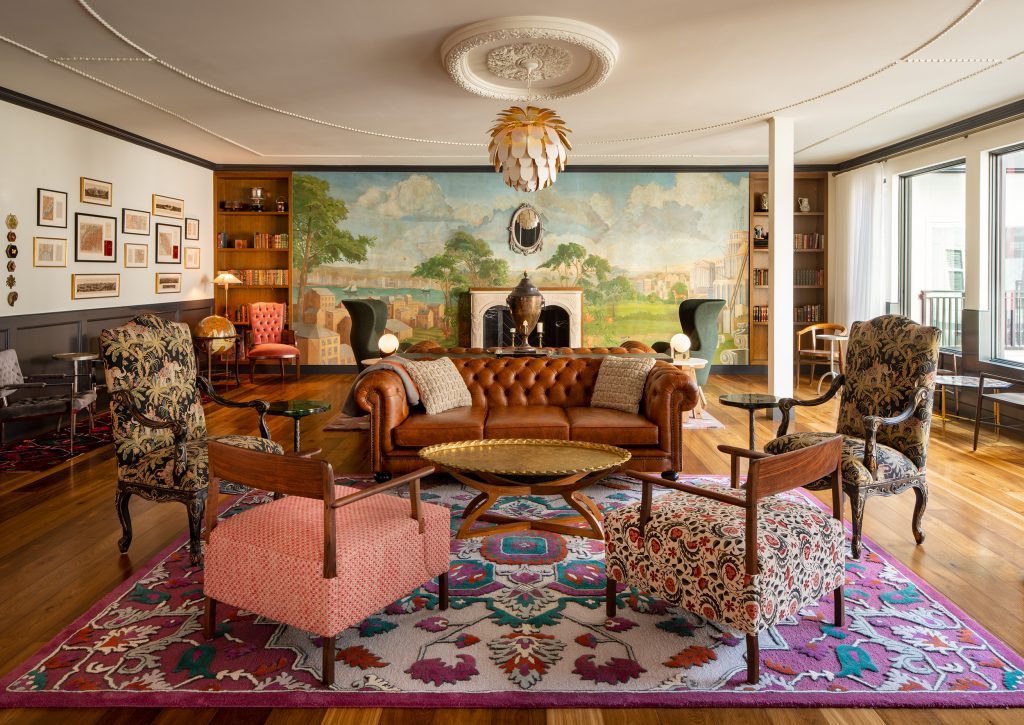The Lockwood Register No. 1
October 2, 2019
The Lockwood Register aims to collate the artisans and artifacts that have brought the building into being.
The Drawing Room is one that Belva might have called her own. Inspecting past legal opinions at her desk, running her finger along the grain of the wood, tracing time. As she works, she turns the page of precedent, parsing a long history of law to make her argument whole. Situated at the end of this corpus of thought, she refines the fragments from which her opinion is pieced together, with a precision nearing obsession. Line by line, point by point.
It is under this principle – conception through historical consciousness – that the Lockwood was built, as an assiduous engagement with the finest details of a place and a period. And in practice, the building of the Lockwood was achieved through the coordination of many people. The Lockwood Register is intended to highlight these individuals and their teams, to add the proper weight to the objects and spaces that make the Lockwood unique.
At the start of each new project, the development team must understand the cultural attitude of a place, interpreted not only through community gatherings, oral histories, and local businesses, but also through trash routes and zoning code. The task is far more than pouring a foundation and building upwards, but instead understanding the frame of city, neighborhood, block, and building at increasing levels of precision. The Lockwood, in every way, is an artifact of this process.
“Capitol Hill is a place we’ve been thinking of for a long, long time” – Sarah, development team member.
The intimacy of Capitol Hill starts, very broadly, from the unique planning of DC, which has limited the growth of skyscrapers while allowing micro-neighborhoods to rise. L’Enfant’s plan, the original city plan for Washington, DC, consisted of an orderly grid of residential streets overlaid with a series of diagonal “grand avenues.” In this plan, plazas became the central hinges on which many “grand avenues” intersect, while still leaving room for quiet residential areas. The plan’s charm is preserved on Capitol Hill, where one can easily meander from main thoroughfare to a neighborhood that doesn’t necessarily fit to a grid. It is among these quiet corridors that L’Enfant’s plan allowed for the city to develop autonomously within his urban frame, and this is seen in the micro-neighborhood surrounding the Lockwood – tucked into a kite-shaped corridor, accessible by metro, main roads, and a paved pedestrian alley

In thinking about how to design a building that would fully embrace this unique urban fabric, the development team turned to two of the critical designers that helped them deliver the Apollo on H Street: the interior designer, Edit Lab at Streetsense, and the building designer, SK+I Architecture. The Edit Lab team had previously designed many of the upscale upstarts in Shaw’s Blagden Alley, another micro-neighborhood which has become a hub of culture and cuisine in the middle of DC, and has continued to work on restaurants in neighborhoods throughout the city. After their work on the Apollo, the developer and designers identified one of their key design challenges for The Lockwood – building spaces that redefine timelessness. While it’s difficult to draw a line through the design teams’ work, the foremost takeaway is an old-time obsession with craft, lightened by the quirks and caprices of the people behind them. Editlab was intimately involved with the design of many of the Lockwood’s interior spaces, from the rooftop pub to the ground-level conservatory. This process occurred alongside the work of other crucial partners, including art curator Claire Huschle and Insight’s property manager Bozzuto, who ensured each space considered the full spectrum of form and function.
And within these carefully curated spaces, the team commissioned artists to execute the attitude with even greater precision, contributing objects of all kinds that represented Belva Lockwood’s era. These artifacts, aching with authenticity, bring the Lockwood to its conceptual destination, as a body within which the past and present can engage in spirited conversation. As member of the Insight team described, the Lockwood imagines how a building from this period would have aged over time, with would-be caretakers deliberately acquiring objects and cultivating spaces that suited the building’s and their own evolving personality.

On a day in early August, Brendan, a member of the development team, walked me through a top floor that is just hours from completion, and for a moment I feel the suspense that he must have felt throughout this project, as dusty installations are polished into inhabitancy. We side-step tiles patterned in yellow, blue, and rich red, waiting to be aligned, and we pass through a threshold into the “Velvet Belva” Pub. Belva’s edgy carte de visite, contributed by avant-garde artist JJ McCracken, transforms the prohibition-style pub into a modern speakeasy. The pub is somewhere between cozy and quirky, with just a dash of irreverence.
Downstairs, the iron-wrought ceiling of the conservatory, elegant and judicial, is goaded by whimsical rugs and flora which line the floor. The glass doors of the conservatory open into a reinterpreted English garden designed by Steve Sattler and Trini Rodriguez at Parker Rodriguez – a layered mix of shrubs, ferns, bricks, and tile, centered on a fountain swelling with quietude. The garden, even in its symmetrical layout, is still unique from every angle, and the space is just wide enough to welcome sunlight for the greater part of the day.
And in the Drawing Room, the very first space which visitors enter, sculptor Kate Hardy assembled a super structure of ceramic workings that fill the lungs of an antique wooden cabinet. McClain Wiesand, a Baltimore-based custom furniture studio, spent weeks at work on the modern fresco that defines the room. It’s no surprise that this is the room which most frequently makes its onto Instagram, as it could just as well have been the focal point of a 19th century postcard.

Just as DC’s planners encouraged the city to continue changing even after its map was drawn, so has the Insight team encouraged Lockwood residents to weave its own community. Throughout the building reside rituals-in-place from the first floor tea service to the rooftop pub. The team has invited a resident who works days at the arboretum to become involved as the conservatory’s community gardener.
Brendan, a member of the development team, compares this process to one of fractal precision, a scientific idea that has crept into other realms of working philosophy. He means to show that success, and satisfaction, in planning involves attaining perfection at increasing levels of precision. From a city to a street, a building to a room, an artist to an artifact. Collecting people, periods, times, and temperaments into a coherent work. Like a lawyer in her study.
Line by line. Point by point.
